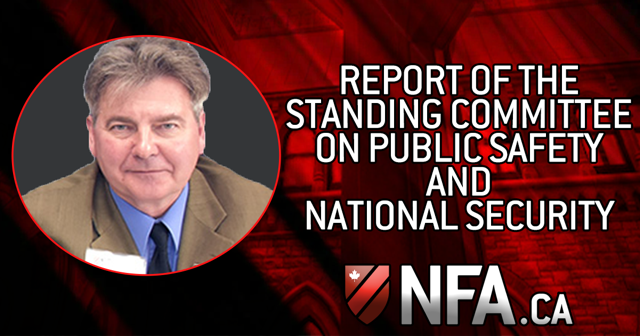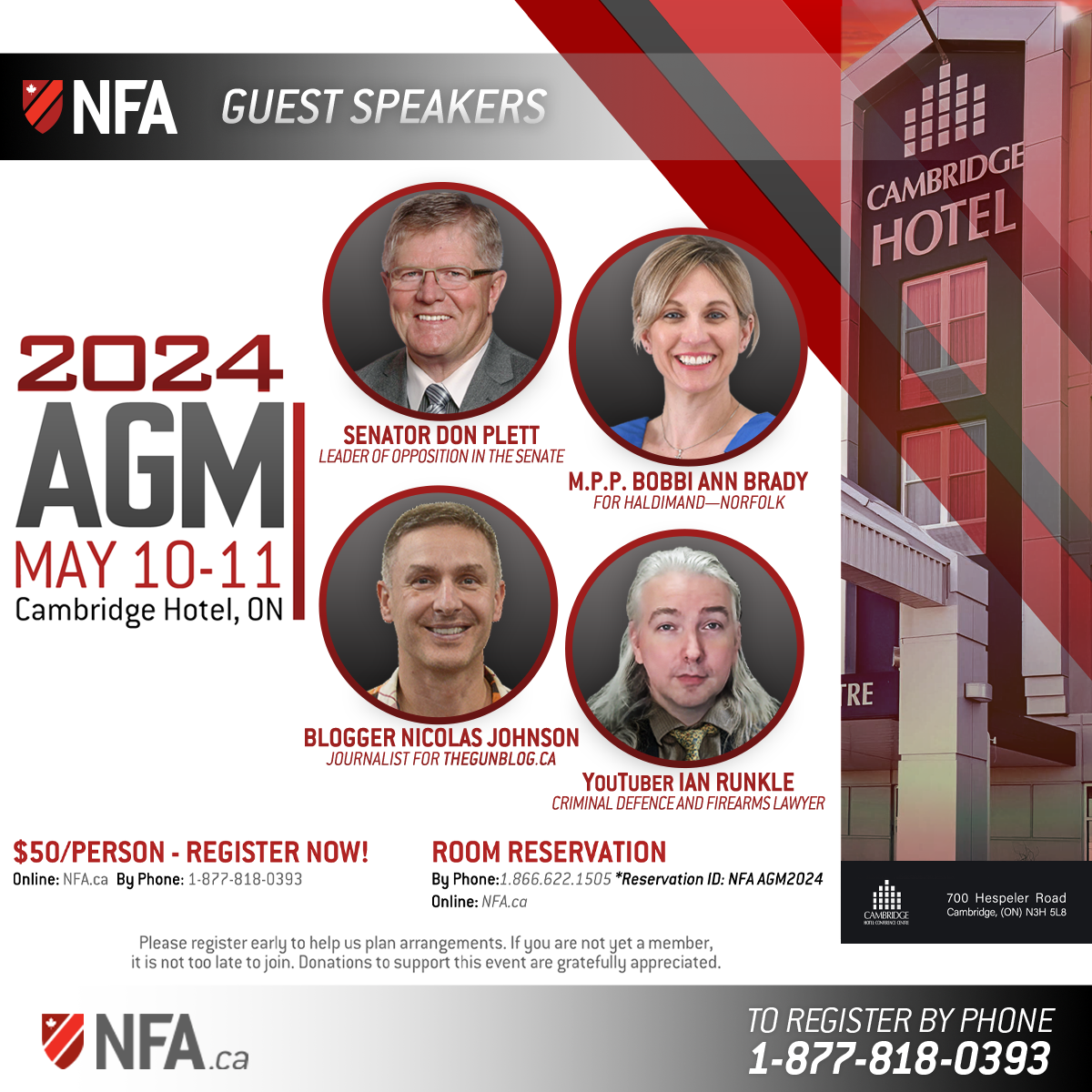SECU Guns and Gangs 2022 Report Analysis

Pursuant to its mandate under Standing Order 108(2), the STANDING COMMITTEE ON PUBLIC SAFETY AND NATIONAL SECURITY (SECU) conducted a cross sectional study on gun control, illegal firearms trafficking and the increase in armed criminal violence and on April 22, 2022 presented to the House its final report called ‘A PATH FORWARD: REDUCING GUN AND GANG VIOLENCE IN CANADA’.
The motion that led to this particular study was put forward in the House of Commons in reaction to the intensification and increasing frequency of armed criminal violence sweeping Montreal and other Canadian urban centres. The mandate of the Committee was to understand the driving factors behind the surge in the ‘gun and gang violence’ with the intent of recommending effective crime control measures and practical solutions to mitigate the social factors that may be causing it.
The mandate of all Parliamentary Committees is to gather evidence from ministers, officials, the public and organisations outside Parliament. As a result of their deliberations, Committees can make recommendations in their reports for the consideration of the House of Commons or the Government. The Government must respond to the Committees finding within 120 days of the presentation of a report. The government shall then, table a comprehensive response thereto, during which time, no motion for the concurrence in the report may be proposed until the comprehensive response has been formally tabled or the expiration of the said period of 120 days has elapsed.
The membership of all Committees normally reflects the party balance in the House as a whole, meaning that a majority of each Committee will normally be made up of MPs from the governing party. Chairs of committees are duly elected by the Committee members and have few formal powers but do play an influential role in leading the committee’s work and setting the agenda. Chairs do not vote unless it is to break a tie.
It should be noted that the current membership of the 44th Parliament, 1st Session Standing Committee on Public Safety and National Security is composed of 12 duly appointed party MP’s. There are 6 Liberal members; 4 Conservative members; 1 NDP member and 1 BLOC member. The chair is a Liberal member. The majority of the SECU Committee are Liberal members.
During the Committee’s study, several witnesses presented evidence to describe how illegal firearms make their way into our communities, the types of illegal firearms being used in armed criminal activity and the involvement of organized crime in the illicit purchase, transfer and use of illegal firearms to unauthorized end users. Witnesses either applied independently to appear before the Committee or were called directly via a SECU member recommendation. Approximately 50 witnesses agreed to participate in the process. Some of the witness evidence presented to the Committee provided conflicting views because there was no universally accepted subject matter lexicon in play (e.g., Assault-Style Weapons) and the process allowed for the unregulated acceptance of opinion and political rhetoric as legitimate evidence. There were also acknowledged quantity and quality issues with the data collected, meaning that some of the evidence collected was based on philosophical or theoretical reasoning and not empirical practice. From the outset, the Committee recognized these inherent limitations and openly admonished that the Committee’s final recommendations may have inherent study reliability and validity issues.
The report is divided into five chapters. Our analysis of the report will concentrate only on the most egregious firearms specific SECU recommendations cited in Chapter 5 that promotes more and stricter gun control as an effective means to reduce so called ‘gun violence’. This chapter addresses gun control from the various perspectives raised by witnesses – expert and not – biased or not.
The introduction of Chapter 5 sets the specious tone for this section of the report with an unsubstantiated predetermination that proclaims public safety policy cannot rely solely on criminal law to deter armed criminal violence but must also include state regulation of legal civilian firearms as part of a holistic approach to effective public safety.
5.1 Classification of Firearms and Firearm Offences
Canadian firearms owners have always had difficulty understanding our complex and evergreen gun control laws because they are purposely written with all-encompassing, ambiguous highbrow legal language that layman and sometimes the courts cannot easily interpret. Many legal critics call it a judicial trap specifically designed to punish firearms owning citizens who are systemically demonized by the state as being politically incorrect. The witnesses that spoke to the Committee regarding this matter highlighted the irrationality of the current gun control regime and criticized it as being unfair, unpredictable and overly complex, making full compliance challenging.
The Liberal SECU Committee recommended the following:
Recommendation 21 That the Government of Canada develop a legal framework that distinguishes between regulatory and criminal firearms offenses in order to provide limited police resources the ability to focus on violent crime and gang activity.
Recommendation 22 That the Government of Canada develop a standardized schedule and definitions of prohibited firearms within the Criminal Code of Canada, with an emphasis on simplicity and consistency.
Discussion:
While any movement to simplify complex laws to be more specific, less vague, and more understandable is welcome, the Liberal SECU Committee’s recommendations are tantamount to nothing more than half-hearted tinkering with fundamentally bad and ineffective gun control law. Such incongruous patchwork only rationalizes, further legitimizes, sustains and perpetuates such bad law and does not enhance public safety. Our gun control regime is predicated on the premise that civilians cannot be trusted with firearms and pose a national security threat. Therefore, the state must focus public safety gun control policy on regulating these untrustworthy legal firearms owners because they are deemed to be ‘law abiding firearms owners until they are not’.
Empirical evidence concludes that prohibiting firearms does not deter bad behaviour of miscreants and is not associated with changes in the incidence and deaths by mass homicide by firearms. Prohibition in general has the unintended consequences of expanding the illicit free market of prohibited contraband; organized crime and smuggling increases to satisfy free market demand for the contraband; and the supplied contraband becomes unregulated. Moreover, using the Criminal Code to punish non-violent, non-victim offences and to enforce the administrative gun control conditions and whims of state bureaucrats (e.g., expired PAL) is considered by many legal scholars to be a grave injustice which only serves to further degrade public faith in the rule of law and trust in the government.
5.2 Ban on Certain Firearms and Buyback Program / Ban on Handguns / Ban on Assault-Style Weapons and Buyback Program
On May 1, 2020, the Liberal government enacted through regulations approved by an order-in-council from cabinet — not through legislation the ‘Regulations Prescribing Certain Firearms and Other Weapons, Components and Parts of Weapons, Accessories, Cartridge Magazines, Ammunition and Projectiles as Prohibited or Restricted’ which arbitrarily reclassified over 1,500 models of so-called “military-grade” and “assault-style” weapons as prohibited. Prime Minister Justin Trudeau heralded the ban by proclaiming that “These weapons were designed for one purpose and one purpose only: to kill the largest number of people in the shortest amount of time.” While being careful not to actually say that this gun ban would actually deter future mass casualty events, Trudeau skillfully conflated legal firearms held by RCMP vetted and licenced Canadian firearms owners with illegal firearms acquired by unlicensed violent criminals as one and the same, and thereby rationalized his undemocratic edict by implication.
Public Safety minister Marco Mendicino also testified before the Committee and echoed Trudeau’s sentiments about the gun ban and reiterated that the government is implementing a mandatory buyback program of the banned guns. Recently, the federal government was forced to extend the two-year amnesty period to October 2023 to implement the program because the IBM procured project was woefully behind schedule and over budget.
Further Committee discussions with other witnesses raised calls for a national handgun ban and or at least a cap on legal handgun ownership in the belief it would stem the increasing rate of violent armed crime perpetrated with illegally smuggled handguns by making handguns less available on the market. No empirical evidence was presented to support this belief.
The Liberal SECU Committee recommended the following:
Recommendation 23 That the Government of Canada fund additional research into the prevalence of the domestic diversion of firearms, including considering implementing a reasonable limit on the number of restricted firearms a person can own should it be found to be a significant factor in domestic diversion.
Recommendation 24 That the Government of Canada as part of its prohibition on certain firearms implement a mandatory buyback program following consultation with relevant stakeholders.
Discussion:
Criminal defence lawyer Solomon Friedman who was called by the Committee to witness, indicated that “we need a legal framework that distinguishes between what the Supreme Court has called the regulatory end of the spectrum and the true crime end of the spectrum”. While the long called for decriminalization and removal of non-victim and non-violent firearm offences from the Criminal Code of Canada would lessen the unjust persecution of politically targeted firearms owners, such reforms would not change the misguided ideological focus of standing gun control law that inanely holds innocent law-abiding firearms owners responsible for the misuse of illegal firearms by real armed criminals. As such, these recommendations would not enhance public safety or reduce violent armed crime.
The Liberal governments pontification that gun bans reduce armed criminal violence and that gun control is a necessary part of a greater holistic and effective public safety approach to reducing armed criminal violence is also unsubstantiated. House opposition members have long called upon this Liberal government to produce empirical evidence that supports their belief that gun bans and gun control are an effective crime fighting measure. To date, no such information has been presented. The NFA also regularity sends the Liberal government third party empirical evidence that concludes gun control is not crime control but the evidence is also systematically ignored. In fact, when the Liberal government was recently pressed by the gun lobby to produce the supporting evidence for the gun ban, the Department of Justice reacted by invoking Section 39 of the Canada Evidence Act and refused to comply with a failed injunction claiming it was a ‘state secret’ that could not be openly disclosed in court.
Unfortunately, this Liberal governments subterfuge may have hamstrung the legal defence plans of some of the various civil court challenges waiting to be heard. Many believe that the Liberal government doesn’t have supporting empirical evidence and misused its cabinet secrecy privilege as a desperate ploy to hide the true politicised and ideological nature of their edict. Many political pundits also criticized the gun ban edict as undemocratic, authoritarian and a shameless partisan political exercise executed to satisfy Liberal campaign promises previously made to their government funded civil disarmament lobby organizations (e.g., PolySeSouvient); and to pander for votes from low information progressive urban voters in the next planned Federal election.
To the contrary, Professor Caillin Langmann who was also called by the Committee to witness, did present real peer reviewed empirical evidence that stated “No statistically significant beneficial associations were found between firearms legislation and homicide by firearm, as well as spousal homicide by firearms, and the criminal charge of “Discharge of a Firearm with Intent.” Bans of military-appearing firearms, semi-automatic rifles, shotguns and handguns, short barrel handguns and Saturday night specials in the 1990s has resulted in no associated reduction in homicide rates.” This information was clearly ignored in the Liberal SECU Committees recommendations. Note that the term ‘assault-style weapon’ is also sensationalized civil disarmament activist marketing term concocted by anti-gun US legislators, gun control groups, and sympathetic partisan mass media organizations, and has no legal meaning or affect in Canada.
It should also be noted that since the May 1, 2020 gun ban, the Liberal government has openly conceded that armed criminal violence has escalated unabated on their watch. Armed criminal violence has become more common and more Canadian citizens are fearful as result of the Liberal governments lack of effective Public Safety measures. (e.g., Q1 2022 Taking on gun violence TV ads) It seems that the stricter gun controls instituted by the concurrent Liberal governments have not abated armed criminal violence or convinced progressive urban supporters about the necessity of stricter gun control. As a result, many more fearful Canadian citizens are now openly rebuking the Liberal governments hollow mantra that they are keeping us safe and are rejecting the spurious Liberal government claim that stricter gun control results in reduced armed criminal violence. The Liberals have since become more muted.
5.3 High-Capacity Magazines and Ammunition
The use and availability of prohibited so called ‘high-capacity magazines’ by armed criminals and the illicit transfer of ammunition to unauthorized end users was highlighted in the report as a ‘worrying trend’. This issue was purposely brought forward in the study by the Liberal SECU Committee members who control the agenda. The so called ‘High-capacity magazine’ matter is another dated and discredited civil disarmament argument that claims that smaller capacity firearms magazines will result in less homicides in mass casualty events involving firearms.
Notable Canadian civil disarmament lobby activists were called to witness and eagerly offered their predictable opinions of prohibiting pinned full capacity magazines as an effective public safety measure. For example, Heidi Rathjen reminded the Committee that many mass murderers legally purchased pinned full capacity magazines and had removed the rivet to hold more ammunition than is legally mandated. Not to be outdone, The Canadian Doctors for Protection from Guns recommended restrictions on ammunition quantity possessed by licensed Canadian firearms owners to enhance public safety. None of these witnesses offered any empirical evidence to support their beliefs and none are considered to be firearms or ammunition technical experts. What is obvious is that these civil disarmament groups continue curry special favour with this Liberal government and have their ear. In contrast, no pro-gun rights advocacy organizations like the NFA were called to witness. Our application to witness was ignored.
Matthew Hipwell from Wolverine Supplies, who was also called by the Committee to witness, highlighted the fact that so called high-capacity magazines were already prohibited. Full capacity magazines are illegal in Canada if they exceed the maximum permitted capacity of 5 or 10 as prescribed by law. It is a criminal offence to unpinned any pinned full capacity magazine and is still a criminal offence to murder anyone using a pinned or unpinned full capacity magazine.
The Liberal SECU Committee recommended the following:
Recommendation 26 That the Government of Canada review the importation, domestic manufacturing, sale, and possession of all firearms magazines that can be easily modified to hold more than the maximum permitted capacity.
Recommendation 27 That the Government of Canada amend current legislation to require a possession and acquisition license to purchase magazines in the same way as ammunition.
Discussion:
Once again, we are presented with more unsubstantiated, ideologically motivated and misguided recommendations to resolve miscreant behaviour problems that are not caused by the presence, availability or modifiability of an inanimate object. Canada shares a vast undefended and porous border with the US which is the largest producer and exporter of SALW, accessories and ammunition in the world. As the now infamous mass murderer Gabriel Wortman aptly demonstrated in April 2020, a determined mass murderer is not deterred by gun, magazine and ammunition restrictions or prohibitions. He easily sourced guns, ammunition and full capacity magazines illegally in the US and successfully smuggled them across the border into Canada unhindered multiple times. Wortman had no firearms possession and acquisition licence.
There are many empirical studies that have been published regarding the affect of full capacity magazine use in mass murders. Curiously, none of them were presented to the Committee for consideration. For example, in Kleck G. Large Capacity Magazines and the Casualty Counts in Mass Shootings: The Plausibility of Linkages, Justice Research and Policy study 2016;17(1):28-47, it was revealed that in 23 armed mass casualty incidents studied, the mass murderers possessed either multiple guns or multiple magazines, meaning that the murderer, even if denied full capacity magazines, could have easily continued firing without significant interruption by either switching loaded guns or changing smaller loaded magazines with only a 2 to 4 seconds delay for each magazine change. Finally, the data indicated that armed mass murders maintain such slow rates of fire that the time needed to reload would not increase the time between shots and thus the time available for prospective victims to escape would not be presented. The moral of the story is that large stock piles of civilian ammunition or the availability of standard capacity magazines is not associated with changes in the incidence and number of deaths by armed mass murderers. Clearly, there is a disconnect between the Liberal SECU Committee recommendations and the contrary empirical evidence that is available in the public domain.
Conclusions:
The Standing Committee on Public Safety and National Security was commissioned to make recommendations to assist Parliament to produce effective public safety policy to reduce ‘gun and gang violence in Canada’ but after analyzing its results, it is highly recommended that all of this reports Chapter 5—Gun Control recommendations be ignored and rejected outright as misinformation.
As we have highlighted in our previous discussions, this SECU Committee is stacked with a majority of Liberal MP members who disingenuously control the Committee’s focus, affect and results at will. It is well known that our federal politics have become dysfunctional, hyper-partisan and highly polarized to the point where truth is commonly sacrificed on the alter of partisan political ideology. This phenomenon has been aptly played out in this Committee’s workings. The Committee was presented with strong empirical evidence in good faith and it was summarily ignored. The Committee was presented with unsubstantiated opinion and ideological beliefs which were inline with the Liberal governments current gun control ideology and it was all accepted at face value and promoted into formal recommendations. This was clearly not an honest exercise in the search of truth for the betterment of a greater good but contrived partisan political theatre designed to validate a preconceived Liberal government civil disarmament agenda and the betterment of the Liberal party.
Summary and Recommendations:
· SECU Recommendation 21 That the Government of Canada develop a legal framework that distinguishes between regulatory and criminal firearms offenses in order to provide limited police resources the ability to focus on violent crime and gang activity.
REJECTED – Conduct a comprehensive review of the current firearms control programme to remove all legal ambiguity and vagueness. Decriminalization all non-victim, non-violent firearm offences in the Criminal Code of Canada. Conduct systemic overhaul of our broken Parliamentary Standing Committee process.
· SECU Recommendation 22 That the Government of Canada develop a standardized schedule and definitions of prohibited firearms within the Criminal Code of Canada, with an emphasis on simplicity and consistency.
REJECTED – Streamline the current irrational and arbitrary Firearms classification system by adopting a ‘Simplified Classification System’ that would be overseen by a civilian body of firearms experts.
· SECU Recommendation 23 That the Government of Canada fund additional research into the prevalence of the domestic diversion of firearms, including considering implementing a reasonable limit on the number of restricted firearms a person can own should it be found to be a significant factor in domestic diversion.
REJECTED – Repeal all standing firearms legislation that impedes or nullifies a Canadian citizens human right of self-defence with a firearm.
· SECU Recommendation 24 That the Government of Canada as part of its prohibition on certain firearms implement a mandatory buyback program following consultation with relevant stakeholders.
REJECTED – Amend all gun control legislation to permit firearms owners to freely use import, export, buy, sell, trade, inherit and bequeath private property to their heirs.
· SECU Recommendation 26 That the Government of Canada review the importation, domestic manufacturing, sale, and possession of all firearms magazines that can be easily modified to hold more than the maximum permitted capacity.
REJECTED – Repeal all standing firearms legislation that does not provide conclusive empirical evidence that it enhances public safety and provides crime control.
· SECU Recommendation 27 That the Government of Canada amend current legislation to require a possession and acquisition license to purchase magazines in the same way as ammunition.
REJECTED – Reform the Firearms Act and related gun control regulations to protect the rights of firearms owners to acquire, possess and enjoy the legitimate use and full economic potential of their private property.




